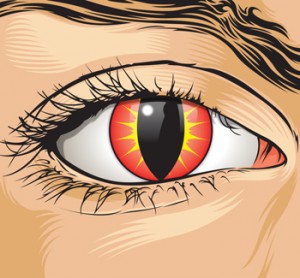 Gender Differences in Blood Pressure Appears As Early As Adolescence, With Girls Faring Worse The female hormone estrogen is known to offer protection for the heart, but obesity may be taking away that edge in adolescent girls. New research from the University of California at Merced finds that although obesity does not help teens of either gender, it has a greater impact on girls’ blood pressure than it does on boys’. In a study of more than 1,700 adolescents between 13 and 17 years old, obese boys were 3.5 times more likely to develop elevated systolic blood pressure (SBP) than non-obese boys, but similarly obese girls were 9 times more likely to develop elevated systolic blood pressure than their non-obese peers. Systolic blood pressure, which is represented by the top number in a blood pressure reading, is the amount of force that blood exerts on blood vessel walls when the heart beats. High systolic measurements indicate risk for heart disease and stroke. Rudy M. Ortiz, PhD, Associate Professor of Physiology and Nutrition and his team obtained their data by direct measurements during the school district’s health surveys and physicals to assess the teenagers’ systolic blood pressure (SBP) against two health indicators: body mass index (BMI), which was categorized as normal weight, overweight, or obese, and blood pressure, which was categorized as normal, pre-elevated, or elevated. The researchers found that the teenagers’ mean BMI was significantly correlated with mean SPB for both sexes when both BMI and blood pressure assessments were used. They also found a significant correlation between BMI and SBP as a function of blood pressure, suggesting that the effect of body mass on SBP is much greater when it is assessed using blood pressure categories. “We were able to categorize the students in different ways, first based on BMI within each of three blood pressure categories. Then we flipped that around and looked at each category of blood pressure for different weight categories. In each case, we are looking at SBP as the dependent variable,” said Dr. Ortiz. An odds ratio analysis revealed that obese boys were 2 and 3.5 times more likely to develop pre-elevated and elevated SBP, respectively, than boys who were normal weight. Obese girls were 4 and 9 times more likely to develop pre-elevated and elevated SBP, respectively, than girls who were normal weight. According to Dr. Ortiz, the results do not bode well for obese teens later in life, especially for the girls. “Overall, there is a higher likelihood that those who present with both higher BMI and blood pressure will succumb to cardiovascular complications as adults. But the findings suggest that obese females may have a higher risk of developing these problems [than males].” As for why obesity has a greater impact on SBP in girls than in boys, Dr. Ortiz has a hunch. “This may be where physical activity comes into play. We know, for example, that obese adolescent females participate in 50 to 60% less physical activity than boys in the population surveyed.”
Gender Differences in Blood Pressure Appears As Early As Adolescence, With Girls Faring Worse The female hormone estrogen is known to offer protection for the heart, but obesity may be taking away that edge in adolescent girls. New research from the University of California at Merced finds that although obesity does not help teens of either gender, it has a greater impact on girls’ blood pressure than it does on boys’. In a study of more than 1,700 adolescents between 13 and 17 years old, obese boys were 3.5 times more likely to develop elevated systolic blood pressure (SBP) than non-obese boys, but similarly obese girls were 9 times more likely to develop elevated systolic blood pressure than their non-obese peers. Systolic blood pressure, which is represented by the top number in a blood pressure reading, is the amount of force that blood exerts on blood vessel walls when the heart beats. High systolic measurements indicate risk for heart disease and stroke. Rudy M. Ortiz, PhD, Associate Professor of Physiology and Nutrition and his team obtained their data by direct measurements during the school district’s health surveys and physicals to assess the teenagers’ systolic blood pressure (SBP) against two health indicators: body mass index (BMI), which was categorized as normal weight, overweight, or obese, and blood pressure, which was categorized as normal, pre-elevated, or elevated. The researchers found that the teenagers’ mean BMI was significantly correlated with mean SPB for both sexes when both BMI and blood pressure assessments were used. They also found a significant correlation between BMI and SBP as a function of blood pressure, suggesting that the effect of body mass on SBP is much greater when it is assessed using blood pressure categories. “We were able to categorize the students in different ways, first based on BMI within each of three blood pressure categories. Then we flipped that around and looked at each category of blood pressure for different weight categories. In each case, we are looking at SBP as the dependent variable,” said Dr. Ortiz. An odds ratio analysis revealed that obese boys were 2 and 3.5 times more likely to develop pre-elevated and elevated SBP, respectively, than boys who were normal weight. Obese girls were 4 and 9 times more likely to develop pre-elevated and elevated SBP, respectively, than girls who were normal weight. According to Dr. Ortiz, the results do not bode well for obese teens later in life, especially for the girls. “Overall, there is a higher likelihood that those who present with both higher BMI and blood pressure will succumb to cardiovascular complications as adults. But the findings suggest that obese females may have a higher risk of developing these problems [than males].” As for why obesity has a greater impact on SBP in girls than in boys, Dr. Ortiz has a hunch. “This may be where physical activity comes into play. We know, for example, that obese adolescent females participate in 50 to 60% less physical activity than boys in the population surveyed.”
 As it turns out, you really can overdose on candy—or, more precisely, black licorice. Black licorice is an old fashioned treat that can be harmful if you eat too much. If you’re 40 or older, eating 2 ounces of black licorice a day for two weeks could cause an irregular heart rhythm (arrhythmia).
As it turns out, you really can overdose on candy—or, more precisely, black licorice. Black licorice is an old fashioned treat that can be harmful if you eat too much. If you’re 40 or older, eating 2 ounces of black licorice a day for two weeks could cause an irregular heart rhythm (arrhythmia).
Days before the biggest candy eating holiday of the year (Halloween) , the Food and Drug Administration (FDA) encourages moderation if you enjoy snacking on the old fashioned favorite. So, if you’re getting your stash ready for Halloween, here’s some advice from FDA:
If you’re 40 or older, eating 2 ounces of black licorice a day for at least two weeks could land you in the hospital with an irregular heart rhythm or arrhythmia. FDA experts say black licorice contains the compound glycyrrhizin, which is the sweetening compound derived from licorice root. Glycyrrhizin can cause potassium levels in the body to fall. When that happens, some people experience abnormal heart rhythms, as well as high blood pressure, edema (swelling), lethargy, and congestive heart failure.
FDA’s Linda Katz, M.D., says last year the agency received a report of a black licorice aficionado who had a problem after eating the candy. And several medical journals have linked black licorice to health problems in people over 40, some of whom had a history of heart disease and/or high blood pressure. Katz says potassium levels are usually restored with no permanent health problems when consumption of black licorice stops.
Licorice, or liquorice, is a low-growing shrub mostly grown for commercial use in Greece, Turkey, and Asia. The National Institutes of Health (NIH) says the plant’s root has a long history of use as a folk or traditional remedy in both Eastern and Western medicine. It has been used as a treatment for heartburn, stomach ulcers, bronchitis, sore throat, cough and some infections caused by viruses, such as hepatitis; however, NIH says there are insufficient data available to determine if licorice is effective in treating any medical condition.
Licorice is also used as a flavoring in food. Many “licorice” or “licorice flavor” products manufactured in the United States do not contain any licorice. Instead, they contain anise oil, which has the same smell and taste. Licorice root that is sold as a dietary supplement can be found with the glycyrrhizin removed, resulting in a product known as deglycyrrhizinated licorice, or DGL, NIH says.
If you have a fondness for black licorice, FDA is offering this advice:
No matter what your age, don’t eat large amounts of black licorice at one time.
If you have been eating a lot of black licorice and have an irregular heart rhythm or muscle weakness, stop eating it immediately and contact your healthcare provider.
Black licorice can interact with some medications, herbs and dietary supplements. Consult a health care professional if you have questions about possible interactions with a drug or supplement you take.
If you’ve experienced any problems after eating licorice, contact the FDA consumer complaint coordinator in your area.
Source: FDA Update Page
 Yoga can relieve lower back pain, but it’s the stretching that helps, not the meditation. A new study found that yoga and regular stretching were equally effective at improving lower back pain symptoms, suggesting that the mindfulness promoted by yoga doesn’t do much for certain hurts.
Yoga can relieve lower back pain, but it’s the stretching that helps, not the meditation. A new study found that yoga and regular stretching were equally effective at improving lower back pain symptoms, suggesting that the mindfulness promoted by yoga doesn’t do much for certain hurts.
More than 200 adults with lower back pain were randomly assigned to take yoga classes, stretching classes or to read a book about exercise and lifestyle changes. Both the yoga and stretching classes focused on strengthening the back and leg muscles.
After 12 weeks, people who did yoga or stretching were more likely to say their back pain was better, much better or completely gone compared with those who read the self-care book, researchers at the Group Health Research Institute in Seattle found. Those who did yoga or stretching were also able to decrease their medications.
For people considering stretching or yoga to improve back pain, study author Karen Sherman said it’s important that the classes are therapeutically oriented, designed for beginners and led by instructors who can modify postures depending on individual physical limitations.
The findings were published in the Archives of Internal Medicine.
 Women who take angiotensin-converting enzyme (ACE) inhibitors to treat high blood pressure in the first trimester of their pregnancies are at no greater risk of having babies with birth defects than are women who take other types of high blood pressure medication or who take no blood pressure drugs, according to a new study from the U.S. Department of Health and Human Services' (HHS) Agency for Healthcare Research and Quality (AHRQ). The study suggests that the underlying high blood pressure itself may increase the risk of birth defects, rather than blood pressure medications taken during the first trimester of pregnancy.
Women who take angiotensin-converting enzyme (ACE) inhibitors to treat high blood pressure in the first trimester of their pregnancies are at no greater risk of having babies with birth defects than are women who take other types of high blood pressure medication or who take no blood pressure drugs, according to a new study from the U.S. Department of Health and Human Services' (HHS) Agency for Healthcare Research and Quality (AHRQ). The study suggests that the underlying high blood pressure itself may increase the risk of birth defects, rather than blood pressure medications taken during the first trimester of pregnancy.
ACE inhibitors are among the most widely prescribed drugs used to treat high blood pressure, particularly for people who also have diabetes. ACE inhibitors are known to raise the rate of birth defects in the second and third trimesters of pregnancy, and one earlier study reported a link between the use of ACE inhibitors and birth defects in the first trimester of pregnancy. But the new AHRQ report, based on a study of a larger population, did not find a unique link between first-trimester ACE inhibitor use and birth defects.
Results of the study, prepared for AHRQ's Effective Health Care Program by the HMO Research Network—a member of AHRQ's Developing Evidence to Improve Decisions about Effectiveness (DEcIDE) Network—are published in the October 18 issue of BMJ.
"Some women of child-bearing age have high blood pressure, and about half of them will get pregnant while taking one or more medications to treat it," said AHRQ Director Carolyn M. Clancy, M.D. "This report should lead to more informed discussions by women, in consultation with their doctors, about the best way to manage their high blood pressure, particularly if they become pregnant."
ACE inhibitors are also used to treat heart failure and to protect some people from diabetes complications. Yet because they work by inhibiting an enzyme in the kidney, physicians counsel caution in taking them in the second and third trimesters of pregnancy, a crucial period of development for the unborn baby. ACE inhibitors carry a "black box" warning from the Food and Drug Administration—that agency's strongest warning—against their use in the second and third trimesters of pregnancy.
A study published in 2006 that examined nearly 30,000 births over 15 years to mothers enrolled in Tennessee's Medicaid system suggested that pregnant women who took ACE inhibitors in the first trimester of pregnancy had babies with birth defects at approximately three times the rate of mothers who were not taking medicines for high blood pressure. But the new AHRQ study—which examined more than 465,000 babies born over 13 years in the Kaiser Permanente Northern California region—found no such correlation. The new report found that birth defects occurred at the same rate among all women with high blood pressure, regardless of whether they took ACE inhibitors, other drugs to treat high blood pressure or no blood pressure drugs.
While the AHRQ study did not conclude that high blood pressure is explicitly to blame for increased birth defects, researchers said that the findings suggest that underlying high blood pressure likely results in increased birth defects. Thus, taking steps to reduce blood pressure before pregnancy—including losing weight and reducing sodium intake—may reduce the risk of birth defects.
Results of the study, prepared for AHRQ's Effective Health Care Program by the HMO Research Network—a member of AHRQ's Developing Evidence to Improve Decisions about Effectiveness (DEcIDE) Network—are published in the October 18 issue of BMJ.
 Wouldn’t it be cool to have Twilight vampire eyes for Halloween? Or deep violet eyes to match your purple sweater? How about your favorite sports team’s logo on your eyes just for fun?
Wouldn’t it be cool to have Twilight vampire eyes for Halloween? Or deep violet eyes to match your purple sweater? How about your favorite sports team’s logo on your eyes just for fun?
You can have all of these looks with decorative contact lenses (also called fashion contact lenses or color contact lenses, among other names). These lenses don’t correct vision—they just change the appearance of the eye.
But before buying decorative lenses, here’s what you should know:
- They are not cosmetics or over-the-counter merchandise. They are medical devices regulated by the Food and Drug Administration (FDA). Places that advertise them as cosmetics or sell them without a prescription are breaking the law.
- They are not “one size fits all.” An eye doctor (ophthalmologist or optometrist) must measure each eye to properly fit the lenses and evaluate how your eye responds to contact lens wear. A poor fit can cause serious eye damage, including
- scratches on the cornea (the top layer of your eyeball)
- corneal infection (an ulcer on the cornea)
- conjunctivitis (pink eye)
- decreased vision
- blindness
- Places that sell decorative lenses without a prescription may give you few or no instructions on how to clean and care for your lenses.
Failure to use the proper solution to keep contact lenses clean and moist can lead to infections, says Bernard Lepri, O.D., M.S., M.Ed., an optometrist at FDA. “Bacterial infections can be extremely rapid, result in corneal ulcers, and cause blindness—sometimes within as little as 24 hours if not diagnosed and treated promptly.”
“The problem isn’t with the decorative contacts themselves,” adds Lepri. “It’s the way people use them improperly—without a valid prescription, without the involvement of a qualified eye care professional, or without appropriate follow-up care.”
Where NOT to Buy Contact Lenses
FDA is aware that many places illegally sell decorative contact lenses to consumers without valid prescriptions for as little as $20.
You should never buy lenses from:
- street vendors
- salons or beauty supply stores
- boutiques
- flea markets
- novelty stores
- Halloween stores
- record or video stores
- convenience stores
- beach shops
- Internet (unless the site requires a prescription)
These are not authorized distributors of contact lenses, which are prescription devices by federal law.
How to Buy Decorative Contact Lenses Safely
- Get an eye exam from a licensed eye doctor (ophthalmologist or optometrist), even if you feel your vision is perfect.
- Get a valid prescription that includes the brand name, lens measurements, and an expiration date. But don’t expect your eye doctor to prescribe anime, or circle, lenses. These bigger-than-normal lenses that give the wearer a wide-eyed, doll-like look have not been approved by FDA.
- Whether you go in person or shop online, buy the lenses from a seller that requires you to provide a prescription.
- Follow directions for cleaning, disinfecting, and wearing the lenses, and visit your eye doctor for follow-up eye exams.
- See your eye doctor right away if you have signs of possible eye infection:
- redness
- eye pain that doesn’t go away after a short time
- decrease in vision
High Price for Fashion
Laura Butler paid $30 for her decorative lenses and $2,000 in medical bills. And she nearly lost an eye. While at the beach in July 2010, Butler of Parkersburg, W.Va., bought a pair of blue contact lenses at a souvenir shop. The brown-eyed Butler was on vacation and just wanted to try a different eye color for fun, she says.
No instructions came with the lenses and the store didn’t sell contact lens solution. “They felt fine, but they moved around on my eyes and I had to adjust them with my finger,” says Butler.
As she was driving home the next day, Butler felt a sharp pain in her left eye. “It was such excruciating pain, I had to quickly pull over on the side of the road.” It took her 20 minutes to remove the contacts, she says, which had stuck to her eyes like suction cups. She drove home “with pain that was indescribable.”
A trip to the ER and then to an ophthalmologist gave Butler a diagnosis: corneal abrasion. “The doctor said it was as if someone took sandpaper and sanded my cornea,” she says. “He said he wasn’t going to sugar-coat it, that I could lose my eyesight or could lose my eye.” Butler saw the doctor every day for 10 days and was under his care for seven weeks. “He took really good care of me and I didn’t get an infection,” says Butler. “But the pain was agonizing. I used to lay on the floor and roll back and forth in a fetal position for hours.”
Butler couldn’t see well enough to drive for eight weeks, had a drooping eyelid for five months, and still has decreased vision in her eye, she says. And she found out her optometrist could have ordered two sets of lenses for $50 and charged $60 for an eye exam.
Her advice: Don’t buy fashion lenses. If you do, “Take the time to go to the doctor, pay the extra money, and save yourself the agony.”
This article appears on FDA's Consumer Updates page, which features the latest on all FDA-regulated products.
October 12, 2011
Contrary to popular belief that estrogen is a risk factor for stroke at all ages, researchers found that the sex hormone actually may prevent strokes in premature or early menopausal women. For the research, published in the journal Menopause, Mayo Clinic scientists analyzed seven other studies to determine how premature or early menopause is associated with stroke.
They found that women who had their ovaries removed before age 50 were more likely to suffer a stroke than women who did not have a bilateral oophorectomy before age 50. But hormone therapy seemed to lower the increased stroke risk for the first group of women, suggesting that a lack of estrogen is linked to the greater risk.
In addition, the age of menopause onset was more important to stroke risk than whether menopause was natural or induced, with earlier onset menopause connected to higher stroke risk.
Study author Walter Rocca said scientists must correct the idea that estrogen is always a problem in the brain. While estrogen can be an issue in older women, the hormone may protect younger women from stroke, he said. Women who experience premature (before age 40) or early menopause (before age 45), whether from natural causes or from ovary removal, should consider taking estrogen up to about age 50 to prevent stroke, Rocca said.
Stroke is the third leading cause of death and the top cause of long-term disability in the U.S. In 2006, more than half of deaths due to stroke were in women, according to the CDC.
Click here to read the Mayo Clinic study.
 Recent Height Loss Predicts Hip Fracture Risk in Elderly, says Institute for Aging Research Study--Simple Measurement May Help Protect Seniors from Major Public Health Threat
Recent Height Loss Predicts Hip Fracture Risk in Elderly, says Institute for Aging Research Study--Simple Measurement May Help Protect Seniors from Major Public Health Threat
Elderly men and women who lost height over a two-year period are up to 54 percent more likely to suffer a hip fracture than those whose height was unchanged, according to a new study from the Institute for Aging Research of Hebrew SeniorLife, an affiliate of Harvard Medical School. “Recent height loss in both elderly men and women appears to provide a simple indication of who’s at risk for hip fracture,” says lead author Marian T. Hannan, D.Sc., M.P.H., a senior scientist in the Institute’s Musculoskeletal Research Center. This information, she adds, could prompt clinicians, seniors and their families to take measures to prevent potential falls and hip fractures.
Published online in the Journal of Bone and Mineral Research, the study found that recent height loss, for both men and women, was associated with a 21 percent to 54 percent increased risk for hip fracture within a subsequent two-year period for every inch of height lost. Men with long-term height loss of two inches or more had nearly twice the risk of fracture than men with less height loss.
Hip fracture has become a major public health concern in the United States. More than 300,000 Americans fracture their hip each year, most of them over age 65, often leading to significant functional impairment, nursing home admission, and death. According to the Centers for Disease Control and Prevention, nearly 20 percent of hip fracture patients die within a year of their injury. Hip fractures cause more deaths, disability and increased health-care costs than all other fractures combined.
The study examined height measurements and hip fracture rates over a 24-year period for 3,081 adults from the Framingham Heart Study, as well as a shorter, two-year term when study participants were elderly. Long-term height loss was calculated as the difference between height measurement at the initial 1948 Framingham examination and the baseline examination for this study in 1974-75. Recent height loss was the two-year loss measured during exams conducted every two years after the baseline exam. Hip fractures were determined through a review of hospital, medical and surgical records, as well as imaging reports.
Height loss was associated with a 40 percent to 54 percent increased risk of hip fracture in men for both long-term and recent height loss; older women with recent height loss had a 21 percent chance of fracturing their hip. Muscle weakening, postural changes, disc degeneration, joint space narrowing, and spinal deformities may all contribute to height loss, says Dr. Hannan, an associate professor of medicine at Harvard Medical School. Kyphosis, or curving of the spine that causes a bowing of the back, may also contribute to height loss and fracture risk.
Current risk assessment tools only consider a patient’s current height, not their amount of height loss. The ability of tools such as bone density testing and computed tomography to predict fracture risk may be enhanced by adding simple height measurements. “Height loss is easily measured,” says Dr. Hannan, “and may indicate potential for subsequent hip fracture, and thus could serve as an alert to clinicians and elders to seek medical evaluation.”
If an older person notices that he or she is losing height, Dr. Hannan says it is reasonable to convey this information to a health-care provider and ask about screening for osteoporosis or the likelihood of a future fracture.
Dr. Hannan’s study was funded by the Arthritis Foundation and the National Institutes of Health.
 Smoking is definitely a risk factor for heart disease but until recently it was not known if this risk was higher in women. Study results published in Lancet in August 2011 suggest that the risk of heart disease due to smoking is higher in women.
Smoking is definitely a risk factor for heart disease but until recently it was not known if this risk was higher in women. Study results published in Lancet in August 2011 suggest that the risk of heart disease due to smoking is higher in women.
The large meta analysis suggested that the harmful effects of tobacco smoking affect men and women differently. In a study of more than two million people, researchers showed that the pooled adjusted female-to-male relative risk of coronary heart disease in smokers vs nonsmokers is 25% higher in women. If anything, said Dr. Rachel Huxley from University of Minnesota, the 25% increased risk may be on the conservative side. Women have not been smoking as long as men, so the true impact on women's health may not have manifested yet.
Of particular concern are the increasing number of young girls starting to smoke compared to young boys. ALERT: Young ladies who start smoking, you might think you look cool now but you won't look so cool when you get older and are walking around with an oxygen tank!
 Many women over 50 continue to have an active sex life but most of the messages and campaigns about safe sex are aimed at younger generations. A new study in the Journal of Consumer Affairs (no pun intended) stresses the need for better communication between doctors and their older patients about sexual health and ways to negotiate with partners about safe health practices.
Many women over 50 continue to have an active sex life but most of the messages and campaigns about safe sex are aimed at younger generations. A new study in the Journal of Consumer Affairs (no pun intended) stresses the need for better communication between doctors and their older patients about sexual health and ways to negotiate with partners about safe health practices.
Dr. Cynthia Morton and her colleagues at the University of Florida examined women's knowledge about sexual health and their concerns about safe sex practices as they continue to pursue active sex lives into their senior years. Women aged 50 years and older participated in focus group discussions to talk about the challenges in finding male partners, negotiating condom use, and seeking credible information sources to help them make the best decisions about sexual health.
Results of the study revealed that older women are aware of the risks for sexually transmitted diseases yet are uncomfortable about seeking sexual health information from their regular physicians who may erroneously believe that they already possess the knowledge. Although older women know the importance of condoms in preventing sexually transmitted diseases, they may avoid negotiating condom use with their partners in an effort to avoid conflict or rejection. Senior-aged women are receptive to strategies that give them tools for negotiating with partners and for communicating with their physicians, but there are limited resources directed to their age group.
"The findings generated from our research offer a rich foundation for better understanding the motivations and concerns that influence senior-aged women's attitudes about dating at their present stage of life," said Morton.
According to the authors, efforts are needed to help older women gain confidence to talk with primary care physicians about sexual health and to make those physicians aware of their need. The authors also call for social marketing campaigns that aim to educate older women about their sexual health risks and encourage them to take greater ownership in the negotiation of safe sex practices with their partners.
Source: Wiley-Blackwell. "Older Women Lack Important Information About Sexual Health." Medical News Today. MediLexicon, Intl., 16 Sep. 2011.
The study, conducted by researchers at the University of Illinois at Chicago, surveyed 989 women who had been diagnosed with breast cancer within the last three months about their stress levels. The results showed that women with higher levels of stress were 38% more likely to have estrogen receptor-negative breast cancers. For these types of cancers, medications such as Tamoxifen, raloxifene, Arimidex are not helpful. Furthermore, the findings also showed that these women were 18% more likely to have high-grade tumors, which tend to be more aggressive. The study also found that on average black and Latina women had higher stress scores than white patients.
The study researchers acknowledged that it was not possible to determine if high stress levels existed prior to being diagnosed with breast cancer or if high stress levels are the result of being diagnosed with breast cancer. According to Garth Rauscher, lead researcher, “It’s not clear what’s driving this association. It may be that the level of stress in these patients’ lives influenced tumor aggressiveness. It may be that being diagnosed with a more aggressive tumor, with a more worrisome diagnosis and more stressful treatments, influenced reports of stress. It may be that both of these are playing a role in the association. We don’t know the answer to that question” .

 An article published in the
An article published in the